'The road from Zhangmu via Nyalam to Tingri is everything a Himalayan drive should be. With tall peaks as the backdrop, switchbacks yielding to roads that stretched into eternity, passing by some of the most scenic views on the planet.'
Saisuresh Sivaswamy/Rediff.com who took a road trip to the 5,200-metre Everest Base Camp crosses into China...
Day 1 A date with the eternal beauty: Everest
Day 2
The second day of our road trip saw the convoy wind its way to the border crossing nice and early, in order to avoid the trucks that were lined up in a long serpentine queue. The paperwork had already been initiated by the agent before our arrival, and the walkover into Friendship Bridge was smooth. As was the Chinese scrutiny of our papers.
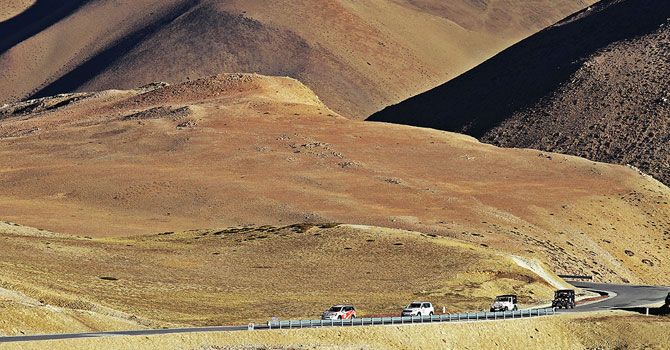
What took a little time was for the cars and the designated drivers to clear the formalities, after which we breezed through immigration and customs.
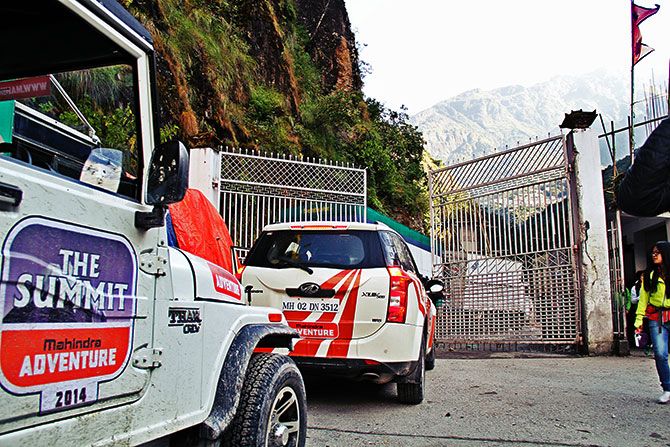
While waiting, a sign caught the eye: 'Passager facility'. If you were to cross over into China at this point, our advice would be to empty your bladder in advance, so you won't need to use the, well, facility. But no one told us this was a foretaste of what was to come...
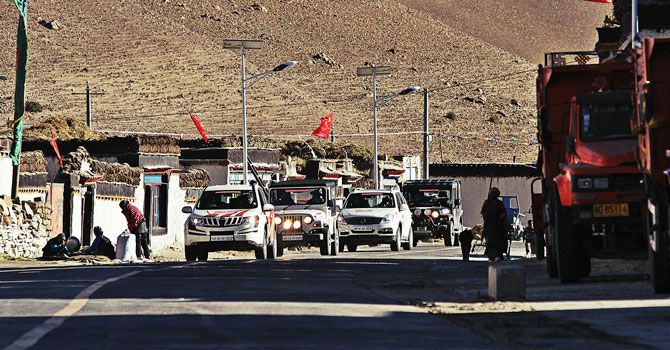
Once the paperwork was done and the cars were released, we made it to the Zhangmu border post for the final clearance, which took a couple of hours. Lunch done in the meantime, it was almost 3 pm before we could proceed on our way.
The contrast from the Nepali side, with its barely-there mountain highway, and the Friendship Highway on the Chinese side, with its smooth, well-maintained tracks, was stark. So was the driving style. While we were all along driving on the left side of the road, India style, once we crossed the China border we had to move over to the right side of the road.
There was another difference too. Till Zhangmu, the food remained familiar. Nepalis, we saw, were big on Dal-Bhaat, what in India would be called a thali or rice plate. Henceforth, we were told, food would be different.
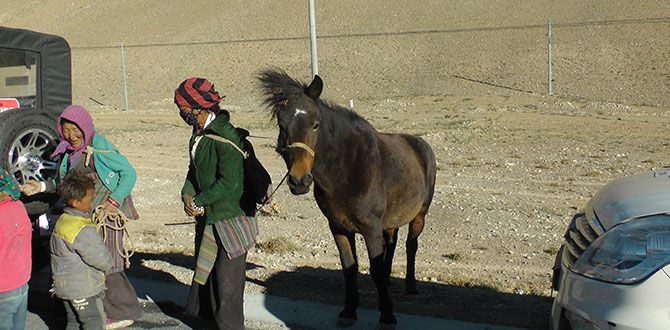
The road from Zhangmu via Nyalam to Tingri, where we were to spend the night, is everything a Himalayan drive should be. With tall peaks as the backdrop, switchbacks yielding to roads that stretched into eternity, passing by some of the most scenic views on the planet, with hardly any traffic to slow us down, the vehicles purred along, effortlessly reaching speeds of 200 km once we crossed the Lalung La pass (height: 5,200 metres) and headed into the plateau, poetically known as the Roof of the World. We passed by quaint Tibetan settlements, prayer mounds, herdsmen leading their flock home.
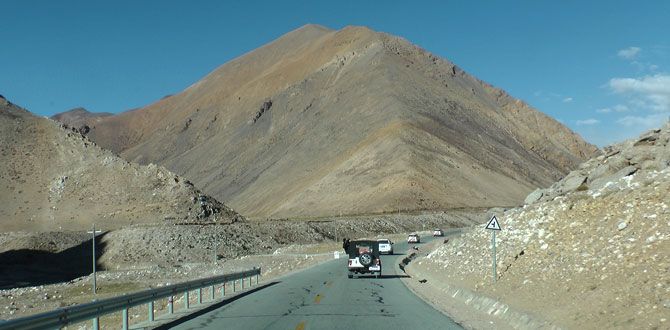
It was a steep climb, alright. We were heading to Tingri, which is at an altitude of 14,000 feet, without any acclimatisation.
How will both man and machine react to the height, and the cold, remained to be seen. Speaking for the former, we were well protected, taking Diamox daily since the last two days to prevent altitude sickness. As for the latter, we would soon find out.

With bio halts, photo ops and a tea break en route, we reached Tingri's Kangar hotel around 8 pm, the cold alerting us to the altitude. The woollies were quickly pulled out, and we bulked up our warm cover.
Dinner was Chinese style, around a lazy susan, of sticky rice, yak meat fry, pork and potatoes, all eaten with chopsticks.
Luckily, we were holding up to the altitude quite well, but what will the next day, when we head to Rongbuk, hold? Especially with temperatures promising to be in the sub-zero range?
Distance covered: 250 km; Time taken: 6 hours; Altitude: 4,300 metres (somewhat higher in elevation than Leh, Ladakh). Clothing: Dress in layers because it is cold, definitely cold. Night temperature around 0 degrees in early October. Gloves, thermals, recommended.
Day 3 The world's highest post office
Day 4 An eyeful of Everest










